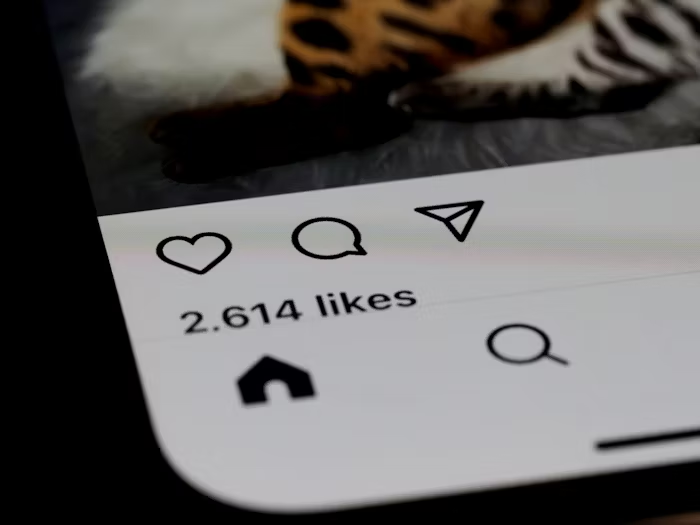
The Power of Dark Posts for Social Media Marketing (Upadted 2025)
What Are Dark Posts in 2025?
Dark posts, also known as unpublished posts or dark ads, are targeted social media ads that don't appear on a brand’s public feed or timeline. Instead, they’re visible only to the specific audiences selected during the campaign setup. Despite the slightly mysterious name, dark posts are a standard feature of paid social advertising in 2025.
With advancements in platform transparency and stricter privacy regulations, dark posts have evolved. They're now accessible in searchable ad libraries on platforms like Facebook, Instagram, LinkedIn, and X (formerly Twitter), but they continue to offer valuable tools for segmenting audiences, A/B testing, and personalizing campaigns without overwhelming your main profile feed.

Dark Posts vs. Boosted Posts
Feature
Dark Posts (Unpublished Ads)
Boosted Posts
Visibility
Only shown to targeted users; not on your public profile
Visible on your profile and promoted to broader audiences
Creation Method
Created from scratch in Ads Manager
Boost existing organic content
Targeting Options
Full control (custom, lookalikes, detailed interests)
Limited targeting (broad demographics)
Engagement
Engagement happens only on the ad version
Engagement merges with original organic post
To summarize: boosted posts amplify existing content, while dark posts are tailored ad experiences visible only to selected users.
Why Use Dark Posts in 2025?
Dark posts are favored for their ability to:
- Target Specific Audiences Without Cluttering Feeds: Run variations of ads (e.g., women’s vs. men’s product promotions) without overwhelming your public timeline.
- Run A/B Tests: Test different headlines, visuals, and CTAs simultaneously across various audience segments.
- Deploy Location-Specific Promotions: Create geo-targeted campaigns (e.g., local store promos, multilingual ads).
- Influencer Whitelisting: Through influencer partnerships, run ads via influencer accounts for added authenticity while maintaining control over targeting and performance.

How to Create a Dark Post in 2025
- Access the Ads Platform:
- Meta Ads Manager (Facebook/Instagram)
- LinkedIn Campaign Manager
- X Ads
- TikTok Ads
- Set Campaign Objective: Choose your goal: conversions, traffic, engagement, etc.
- Define Your Audience: Use filters like age, location, interests, job titles, behaviors, custom lists, or lookalikes.
- Choose Ad Placements: Select placements like Instagram Reels, Facebook Feed, LinkedIn Feed, or TikTok For You.
- Create a New Ad (Unpublished): Add ad copy, visuals, CTA, and link. Use UTM tracking and ensure it's not published on your profile.
- Preview and Test: Check mobile/desktop versions for formatting issues.
- Launch & Monitor: Use analytics tools like Talkwalker or native platform insights to track performance, measure ROI, and adjust as needed.
Dark Posts in 2025: Still Relevant?
Absolutely. While dark posts are now more transparent thanks to searchable ad libraries and global privacy regulations, their core benefit remains:
- Delivering personalized, segmented messages at scale.
- Supporting influencer-driven ads without disrupting your main feed.
- Enabling in-depth performance testing and creative experimentation.
Brands now rely more on first-party data and AI-powered targeting to maintain compliance while still delivering highly relevant ads. Platforms like HubSpot help integrate this data with your full funnel.

Platform-Specific Dark Post Capabilities in 2025
- Facebook: Supports image, video, carousel, slideshow, and collection formats. Engagement on ad variants can be aggregated via Post IDs.
- Instagram: Works via Meta’s Ads Manager. Appears in Stories, Reels, Explore tab, and Feed.
- X (Twitter): Uses "Promoted-only Tweets." Allows targeting by keyword, TV shows, and trending topics.
- LinkedIn: Through Direct Sponsored Content, target professionals by job title, seniority, industry, and company size.
- TikTok: In-feed native ads blend with content on the For You page.Try CapCut for advanced video editing.
- Pinterest: Promoted Pins appear in search results and feeds.
- Snapchat: Offers Snap Ads, Story Ads, Collection Ads, and AR Lens Ads for full-screen impact.

Best Practices for Using Dark Posts
- Segment audiences precisely.
- Maintain visual and message consistency across variants.
- Use A/B testing to identify top-performing combinations.
- Continuously monitor and optimize using performance data.
- Be transparent with users—ensure all ads meet current privacy standards.
Conclusion
Dark posts in 2025 remain a powerful digital marketing tool. As platforms and users demand more personalization and relevance, dark ads let you speak directly to your intended audience—without disrupting your brand narrative or flooding your public feed.
Used strategically, they enhance engagement, improve conversions, and give brands the agility to test, learn, and grow in a privacy-conscious digital world.

